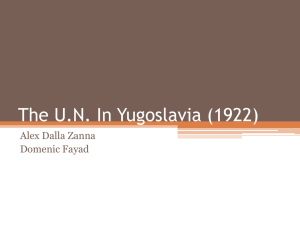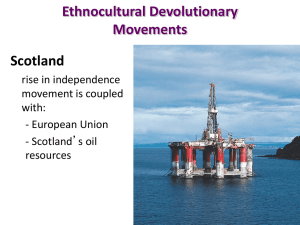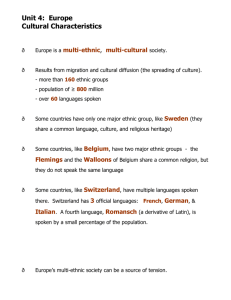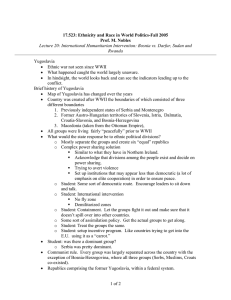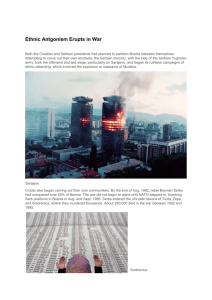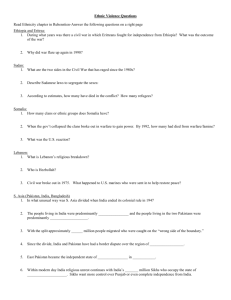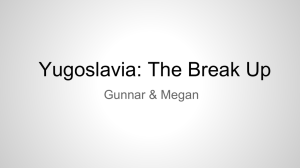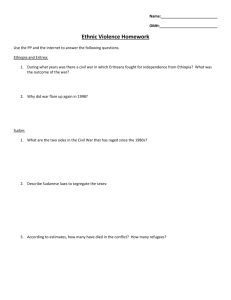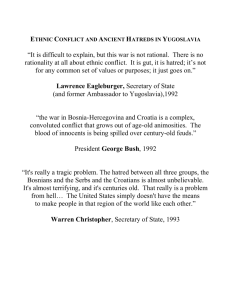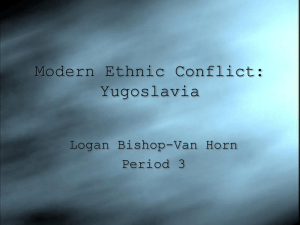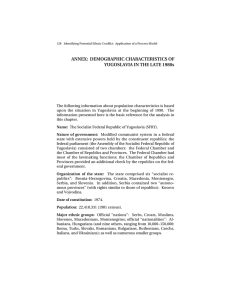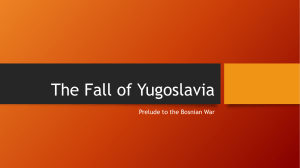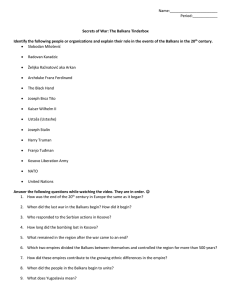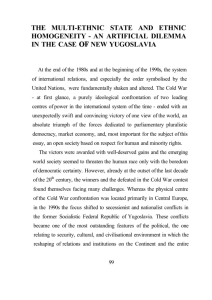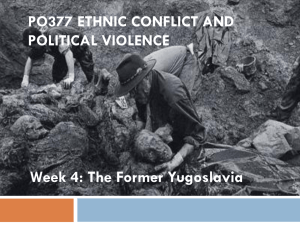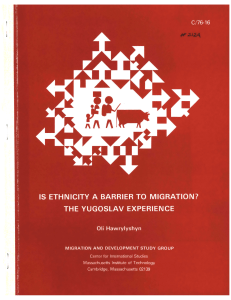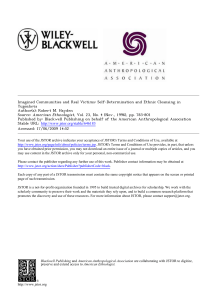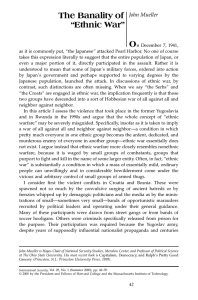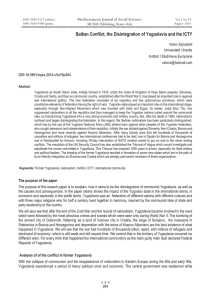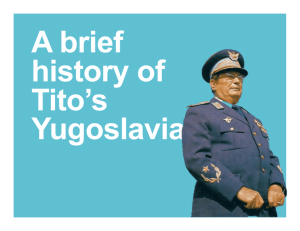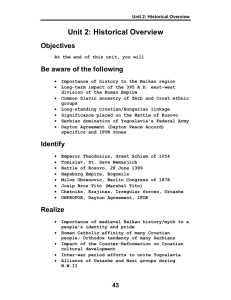History of Yugoslavia Notes HW: Political Map Quiz tomorrow! 3
advertisement
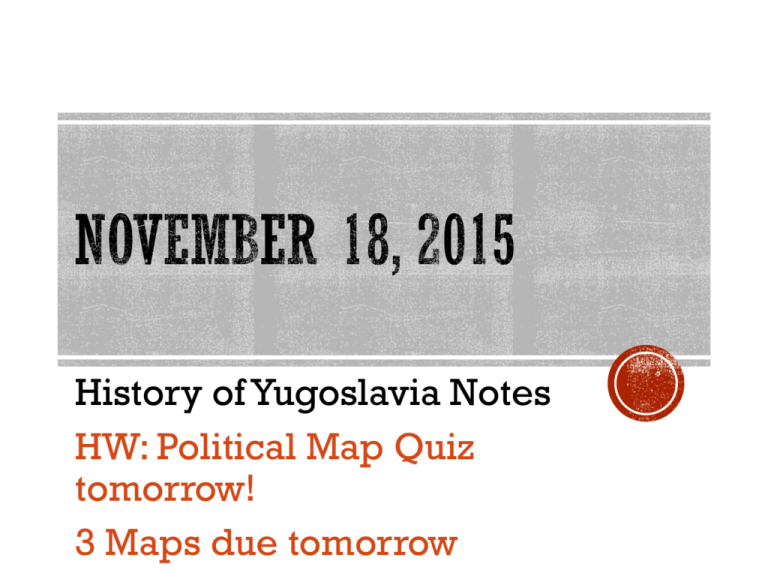
History of Yugoslavia Notes HW: Political Map Quiz tomorrow! 3 Maps due tomorrow https://www.youtube.com/watch?v=Ae_cTGvxYGI The Former Yugoslavia Founded in 1918 Made up of 6 republics united under one flag after breakup of Austro-Hungarian Empire The former Yugoslavia is part of the Balkan Peninsula (the region is more commonly referred to as the Balkans) the former Yugoslavia Historically, the Balkans have been one of the most volatile places in the world. This area has been conquered by multiple empires throughout its history. Including: Roman, Byzantine, Ottoman, and AustroHungarian The Balkans are one of the most culturally complex regions of the world because of its ethnic, linguistic (language) and religious composition. The Ethnic Composition of the Former Yugoslavia Reason for ethnic diversity? Physical geography of the region is very mountainous isolated communities developing different cultures f former Yugoslavia Which country would probably have the most ethnic problems? Why? Bosnia-Herzegovina; Because it is the most ethnically diverse country in the former Yugoslavia. What role did geographic location play in Bosnia’s ethnic diversity? What role did geographic location play in Bosnia’s ethnic diversity? Several of Bosnia’s ethnic minority groups are the same as the ethnic majority groups of its neighboring countries. 1945 Nationalism increased after WWII Area comes under communist control and Soviet sphere of influence Communists were able to deal with national aspirations by creating a federation of six equal republics - Croatia, Montenegro, Serbia, Slovenia, BosniaHerzegovina, and Macedonia. Restored economic stability post WWII However, tensions continued to grow for next 45 years as different regions develop differently 1992 U.S.S.R. collapses Multiple nations in Eastern Europe gain independence Nationalism increases in Yugoslavia Republics start to break away Slovenia and Croatia want independence but Serbia wants to keep region intact and control it politically 1992 Slovenia and Macedonia granted independence Serbian president = Slobodan Milosevic Serbs do not allow Croatian independence Serbian minority in Croatia 1992 Croatia eventually given independence Bosnia declares independence Serbia does not recognize Bosnian independence Civil war breaks out between B and S SERBS COMMIT GENOCIDE AGAINST BOSNIAN CROATS AND MUSLIMS IN ORDER MAKE BOSNIA MORE “SERBIAN”. The Serbian policy of ethnic cleansing in Bosnia also resulted in creating a “refugee” population in neighboring countries. Refugee- a person who flees his or her country because of a fear of persecution based on race, ethnicity, religion, ideology, or political affiliation. Many non-Serbians living in Bosnia fled to neighboring countries out of fear of ethnic cleansing by Serbs. USA sponsors peace talks in 1995 Bosnia granted independence Macedonia granted independence in 2006 Former Yugoslavia is now Slovenia, Croatia, Bosnia & Herzegovina, Serbia, Montenegro, and Macedonia The international community placed responsibility for the ethnic cleansing in Kosovo on Serbian President Milosevic and as a result he was arrested and charged with “crimes against humanity”. For the time being, this finally brought political stability to the region. A new political term has been formed to describe what happened to the former Yugoslavia at the end of the 20th century: BALKANIZATION BALKANIZATION The process of breaking up a region/country into smaller, mutually hostile countries.
